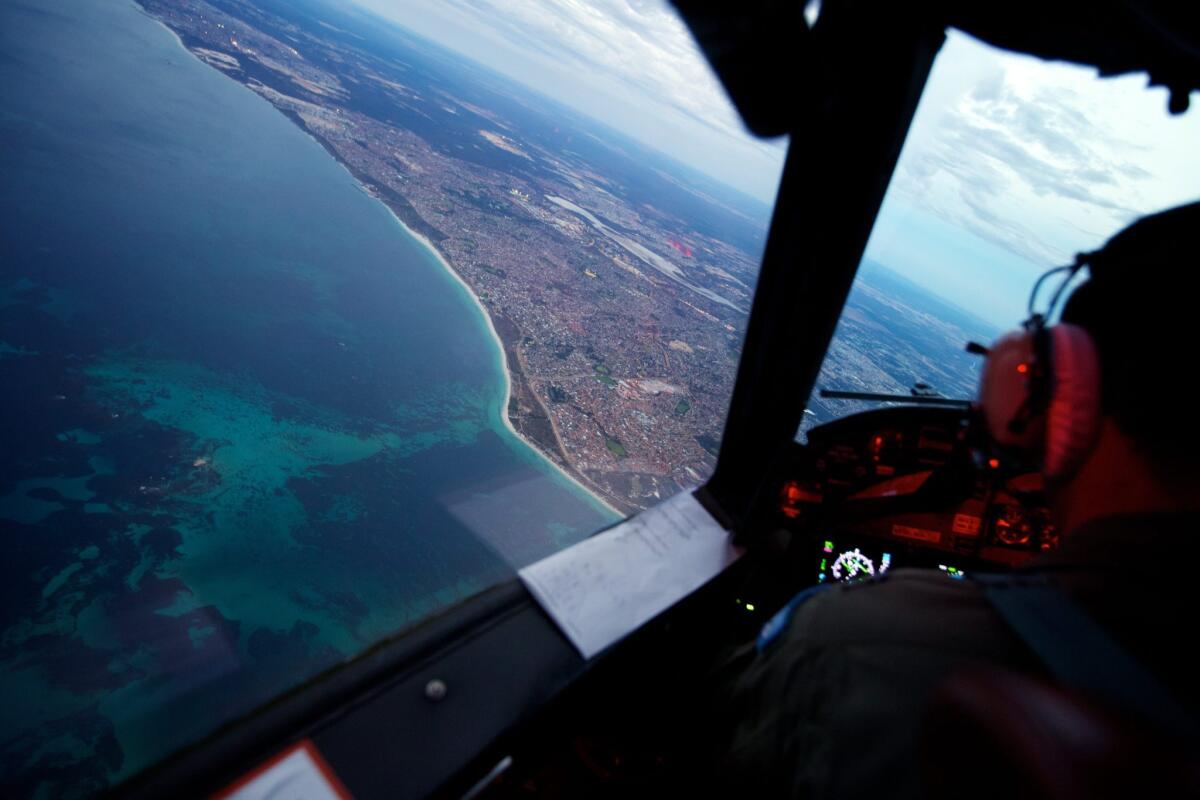British company analyzes satellite data for Malaysia Flight 370

- Share via
The British company whose satellite data helped direct search efforts for Malaysia Airlines Flight 370 toward the south Indian Ocean said about two weeks ago that it had received “routine” and “automated” signals from the missing Boeing 777.
Malaysian Prime Minister Najib Razak, who announced Monday that the plane carrying 239 people “ended in the southern Indian Ocean” with no hope of survivors, said the company, Inmarsat, has been performing additional calculations on satellite data. Flight 370 disappeared March 8.
“Using a type of analysis never before used in an investigation of this sort, they have been able to shed more light on MH370’s flight path.”
While the Boeing 777’s transponders and communications systems were disabled, the airplane’s satellite terminal was still on, “pinging” to try to maintain a connection with a satellite.
Tim Farrar, president of the consulting and research firm Telecom, Media & Finance Associates Inc. in Menlo Park, Calif., who is familiar with Inmarsat satellites, said the company looked at the Doppler effect to understand the speed of the plane relative to the satellite. This gave them two probable arcs of possible flight paths: One to the north and one to the south.
“The arcs were based on time shift --how long the ping took to reach the satellite -- which gave a distance and thus an arc,” Farrar said. “By looking at speed -- and comparing to other planes at the same distance from the satellite -- it was possible to determine the plane was not in the Northern Hemisphere and pin down the track with a high probability.”
In the last week, search teams directed their efforts to the vast expanse of the southern Indian Ocean. The U.S. Navy, China and Australia have been combing the area by air and sea for clues.
Inmarsat’s signal findings “obviously sent searchers to this area several days ago, and by this standard progress was being made,” said Scott Hamilton, an aviation industry consultant and managing director of Leeham Co. in Issaquah, Wash. “If debris is from the airplane, this will enable computer analysis to backtrack ... taking into account ocean currents, wind and other factors. From here, the search for the wreckage would begin.”
Even if debris is found, calculating where the main body of wreckage may have settled after sinking several thousand feet could be even harder, oceanographers and accident investigators have said.
In such a case, the Navy said it will deploy a system, called Towed Pinger Locator 25, to give searchers an advantage in locating the missing Malaysian airliner’s black box.
The system, which is towed behind a ship at slow speeds, carries a passive listening device for detecting pingers that automatically transmit an acoustic pulse.
Pinger devices are attached to each of the plane’s two black boxes. The Navy said its system can hear a pinger at a “maximum depth of 20,000 feet anywhere in the world.” Battery life of the devices is about 30 days.
Twitter: @wjhenn
More to Read
Sign up for Essential California
The most important California stories and recommendations in your inbox every morning.
You may occasionally receive promotional content from the Los Angeles Times.











